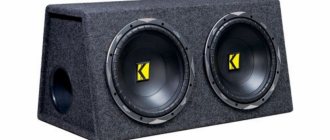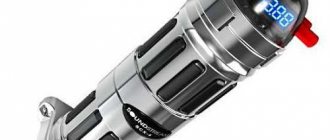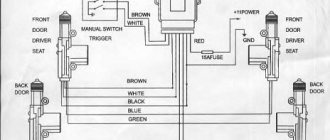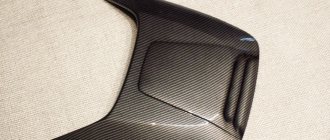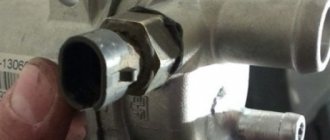What is a subwoofer and for what purposes is it used?
A subwoofer is popularly called simply a sub, and if you translate this word literally, it sounds quite funny - a bark. In fact, this is a real bass speaker, characterized by low frequency, housed in a special box with an extremely complex device.
Today, if you look at a photo of a subwoofer with your own hands, you will notice that they are used in a huge number of different places, ranging from simple everyday situations when it is installed at home and ending with the fact that today many people use subwoofers in their cars.
If you can find a good drawing of a subwoofer and make it correctly, then you can definitely take on almost any complexity of speakers, since low frequency reproduction is one of the most difficult moments in the world of electroacoustics.
It is only important that the subwoofer circuit fully meets your idea of ideal acoustics.
Development of a drawing for the housing
The technical documents of each subwoofer head indicate the required housing volume for high-quality sound. Based on the volume specified by the manufacturer, a drawing should be developed. The volume can be calculated using the formula:
where V is the required volume; h is the height of the box; L is length and A is width.
The parameters of length, height and width can be varied in any direction, taking into account the diagonal of the speaker, choosing a convenient design for the car interior. This is not reflected in the sound quality.
The parameters of the housing walls must also include the width of the material from which it will be made and all materials with which it will be processed. For example, if you plan to make a box from a material 5 mm thick, cover it with sound insulation 5 mm wide and make a wall 20 cm long, then you need to cut 21 cm. Since the parameter specified by the manufacturer is the internal volume of the product.
The width and length of the ventilation slot are calculated from the total length of the product. It should not exceed half the width of the box.
For detailed calculations, you can also use special calculation programs with an easy-to-use interface: JBL SpeakerShop and WinISD.
A little about bass
Reproducing different basses is, in principle, quite a difficult process. In general, the low-frequency region of absolutely any spectrum of available sound waves varies depending on its psychophysiological strong impact on several areas.
In order not to make a mistake in choosing a bass, truly high-quality speaker, and subsequently the box for the subwoofer was made quite quickly, first of all it is necessary to understand their key significance and the corresponding boundaries.
Depth
For various types of wind organs in halls specially renovated for musical instruments, the sub-bass has a significant influence on the timbre of the sound. It is for the sounds of nature and various man-made disasters, such as unexpected explosions, that quite strong sub-bass components are characteristic.
It is worth noting that most people either do not hear sub-bass at all, or they hear it, but not well enough. For example, if you filter out the fundamentally different sounds of a nuclear explosion and a strong hurricane, like a tornado in the tropics, from everything except sub-bass, then we can say with absolute certainty that it is unlikely that any of the listeners will be able to understand what is actually happening.
It is for this reason that almost everyone optimizes a home subwoofer exclusively for midbass.
How to make a subwoofer with your own hands
Over time, I began to miss the pressure from my Ivolga 15c buffer. I had a box of 82 liters. I decided to make a new box with my own hands...
What we needed for this:
- The material - in my case it is free - is old beds. Thickness 20 mm.
- Liquid nails - quantity 1.
- Self-tapping screws - 35th 250 pieces...)
- Jigsaw
- Drill
- Screwdriver
- Klemnik
- PVA glue
- Spray can of black paint
- Shumka
- Sintipon
- Stapler
- Carpet
- The wires are internal from the buffer to the terminal block.
This is our back view...)
We cut out the holes for the buffer and terminal block with the same jigsaw...
The assembly of the box is completed... Let's start covering the box with carpet...
They pulled it without glue... I only glued the carpet tucked into the fazik... I secured it at the bottom with a stapler... I brought the sides together in triangles...
We made additional side panels... (It’s still a mystery why...)
The whole work took three days. Because we needed the sealant and nails to cure well. We lost a lot of sweat and blood while making the box) Since this was the first experience, and accordingly there were many unsuccessful moments. One wall turned out to be 2 cm shorter than needed... and the saddest thing is that the material ran out... I counted everything again, cut it off and then everything went smoothly). And finally the result... The box is ready... And then we ran to the car to check how it would play...)
I'm very pleased with the result
I installed the buffer as I wanted. (Direction to the salon)
. There were quite a lot of pluses, minus one. Now everything is in order))
Now + and - Of the advantages:
1)
All pressure goes directly to the cabin.
2)
The bass has become better and cleaner.
3)
Since all the pressure goes into the cabin, the noise from the silent wings, the fuel
tank
and the trunk lock cylinder has disappeared) Accordingly, saving money on sound insulation) 4) Well, and most importantly, the pressure has increased by an order of magnitude, in comparison with the old box.
Of the minuses: 1) There is no space left in the trunk. (In my case, I don’t use the trunk, so this is not a big problem)
How to choose a speaker?
When choosing, you should definitely pay attention to the fact that a complete calculation of the entire acoustic design is always made only according to the known Thiel-Small parameters.
When creating a good subwoofer on your own, it is only important to take into account the absolute quality factor of the head precisely at its main resonant frequency. This is due to the fact that it is used to select the ideal option for future acoustic design.
Soundproofing surface
Soundproofing the box from the inside will increase the efficiency indicators. You can use various materials, both liquid and sheet.
Liquid soundproofing solutions are applied to the entire internal surface with a thickness of 1-2 mm, including the bass-reflex air duct.
Sheet noise insulation can be attached using PVA glue, also along the entire inner surface of the case.
After treating the box with soundproofing materials, you can insert the subwoofer head, screwing it tightly and fastening all the walls of the box.
Car subwoofers
If you are interested in car subwoofers, then you should definitely keep in mind that they are most often installed either directly under the driver’s seat or in the trunk compartment.
When placed with the second option, the car subwoofer can take up quite a lot of useful space, so it is not used so often. However, even if the subwoofer is placed under the seat, there are some risks associated, for example, with the fact that in this case it is quite easy to damage it with your feet.
In addition to everything else, it is worth paying special attention to the important point that in a fairly cramped car interior you cannot do without the obligatory effect of masking various noises.
It is for this reason that almost all car subwoofers are optimized primarily for sub-bass.
Note!
Lamp for disinfection of coronavirus (COVID-19) - an overview of the best options, as well as instructions for useHow to make a medical mask: instructions for making simple and complex masks to protect against coronavirus (COVID-19)
How to crochet slippers? TOP 8 best ideas from craftswomen. Step-by-step instructions on how to knit beautiful and warm slippers with your own hands
The most popular subwoofer box
subwoofer box A subwoofer is the most well-known way to take the quality of your car's audio system to the next level. With a subwoofer, any tracks you listen to most often in your car begin to sound new, deeper and more spacious, even those that have a little bass. But in order for a sub to play well, it needs acoustic design, in simple terms - a box or box for the subwoofer. The option of installing a speaker into the rear shelf is categorically not welcome, since it plays poorly in such an installation.
It is also not recommended to buy ready-made subwoofers in stores, since they are usually made of thin plywood that rings even when tapped lightly, have a cheap built-in amplifier and contain speakers from the simplest lines of little-known manufacturers.
Therefore, it is best to make a subwoofer to order, when a subwoofer box , which will be made of thick, durable material and will be made exactly to fit the trunk of your car. The amplifier for such a subwoofer must be external and also matched in power to the subwoofer.
What boxes are the most popular? There are several of them, let's start with the most common:
1. Closed box (CL). The easiest box to manufacture and calculate for a subwoofer. It plays well and takes up fairly little space. In order to calculate the required volume for it, you just need to know how many liters a particular speaker needs. After this, it remains to use simple arithmetic to calculate the dimensions of the box. But the efficiency of this acoustic design is the lowest, this is its only drawback.
Closed box built into the trunk of the nine
2. Bass reflex box (FI). The second most popular type of acoustic design. It is a box with a port, that is, a pipe or slot. The back side of the speaker cone emits sound through this port, which almost doubles the efficiency of such a box. It plays well and loudly, but takes up a little more space than a closed box. The calculations are a little more complicated. If you are too lazy to count manually, you can find calculation programs on the Internet that will do the calculations for you and provide all the necessary data for a specific speaker.
MORE Car audio
Advantages of connecting a capacitor to a subwoofer
Bass reflex box for subwoofer
3. Quarter wave (QW), or labyrinth. This type of design allows you to get a very pleasant, musical and fast lower bass, much better than in the two previous options. It’s easy to calculate, because the HF is essentially a collapsed port into which a speaker is inserted. All that needs to be calculated is the area of the port and its length, which will be greater than the tuning frequency of the subwoofer. The efficiency of a quarter wave is enormous! Its only drawback is the same huge size of the box.
subwoofer box - quarter wave
4. Bandpass (BP). It looks like a combination of a closed box with a bass reflex. It has a very pleasant and powerful sound, high output. The dimensions of the box are large, but smaller than the CV. The only difficulty is the calculations. Since it is very difficult to correctly calculate the dimensions and settings, it is used for installation in high-level systems, and even then very rarely.
box for subwoofer - bandpass

